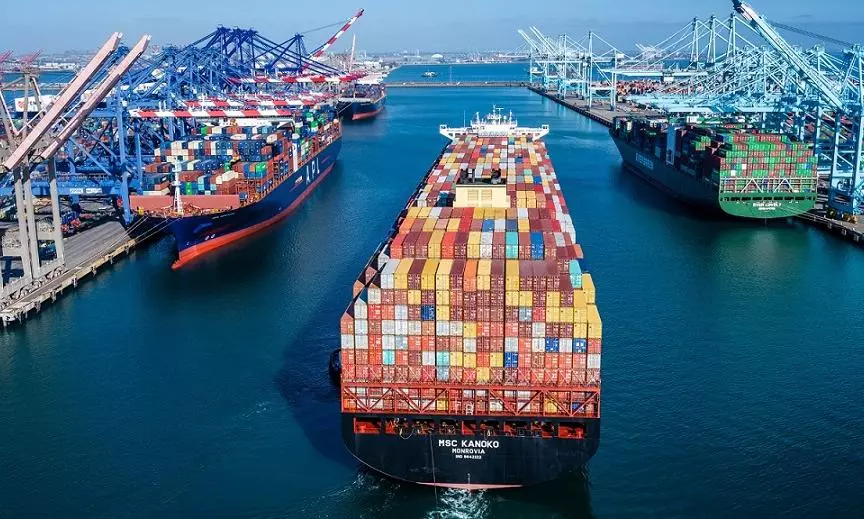Carriers losing control of the market: Drewry
"Spot rates have continued to fall on a weekly basis, rapidly closing in on five-year 2015-19 averages."

Photo Credit: Port of Los Angeles
A deep-seated instinct to preserve volumes has kicked in, leaving carriers without control of the market, says Drewry in its latest Container Forecaster report.
"We gave carriers too much credit by thinking they would proactively manage capacity," says the report.
Drewry was fairly confident, up until a few months ago, that carriers would take necessary steps to reduce capacity before the market got completely out of hand. "We were wrong (although we always said carrier behaviour was a major risk to our forecasts).
"Over the course of this extraordinary phase in container shipping’s history we convinced ourselves – after much dialogue with various stakeholders - that a structural change had occurred in the industry, that consolidation and more efficient carrier alliances would help change old habits. That was wrong too."
It is now clear, Drewry says in its report, that carriers have lost control of the container market, have failed to proactively manage capacity, and will act on capacity only when they are forced to do so by heavy losses.
"When the market first started showing signs of weakness earlier this year, the deep-seated instinct to preserve volumes and price lower to secure short-term bookings, rather than control capacity, kicked in. In hindsight, that was the moment when carriers needed to take action but failure to act then means they are now powerless and completely exposed to external market forces.
"That is not to say that carriers have done nothing but despite all of the various service suspensions and raft of blank sailings, nothing has worked. Spot rates have continued to fall on a weekly basis, rapidly closing in on five-year 2015-19 averages."
Rates continue to decline
The spot rate across the three largest fronthaul trades (Far East to each of the U.S. coasts and North Europe), fell by an average of 79.3 percent from December 31, 2021 to December 31, 2022, according to the latest update from Xeneta.
"The biggest drops in both the absolute value as well as a share of the total rate were seen on the Far East to North Europe trade (-84.1%)."
Order frenzy gone wrong?
Now that the container bubble has burst, the record order frenzy of 2021-22 – which to date has seen some 6.7 million TEU contracted – now appears even more excessive than it did at the time, Drewry added.
"While we believe that capacity reductions will keep top line 2023 fleet growth relatively shallow at 1.9 percent, the easing of supply chain congestion will increase effective capacity at a much greater rate – predicted 19 percent rise - returning the market to an over supplied position (see Figure 1)."
Trade route profitability in Asia-West Coast North America and Asia-North Europe is diminishing very quickly but the impetus for more significant capacity cuts was missing because lanes were still profitable, the update added. "Left unchecked, however, costs will soon exceed revenues in these routes."
Given that loaded volumes are falling at an alarming rate and that rates are nearing break-even levels, Drewry thinks that carriers will finally get busier with some capacity cuts during 2023. "There will be no “managed decline” (meaning very effective and timely matching of capacity with demand) as we described in the last edition. We still think there will be major capacity reconstruction but it will be carried out to prevent freight rates from falling below break even, not to gently ease profit margins above historical averages."



